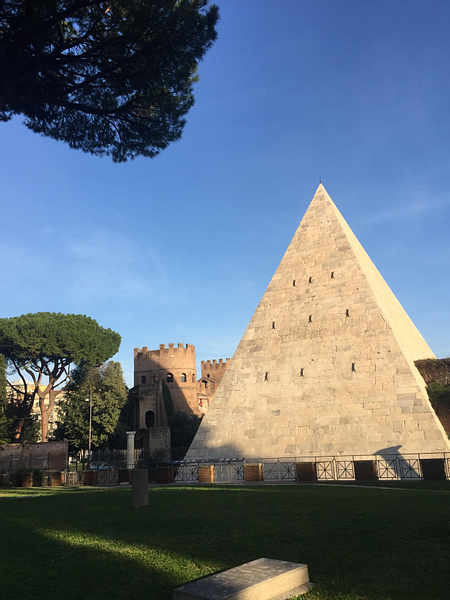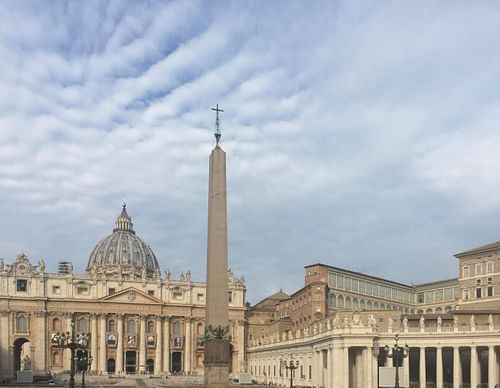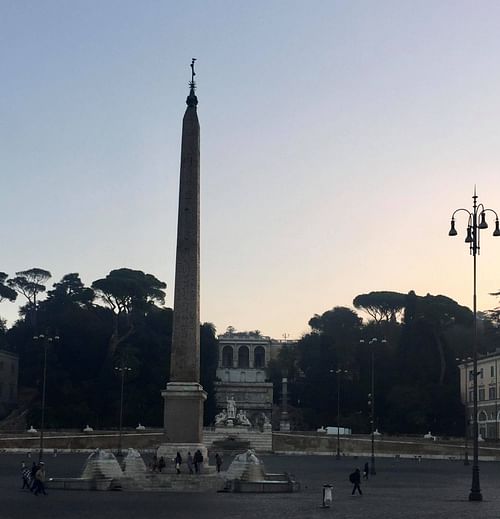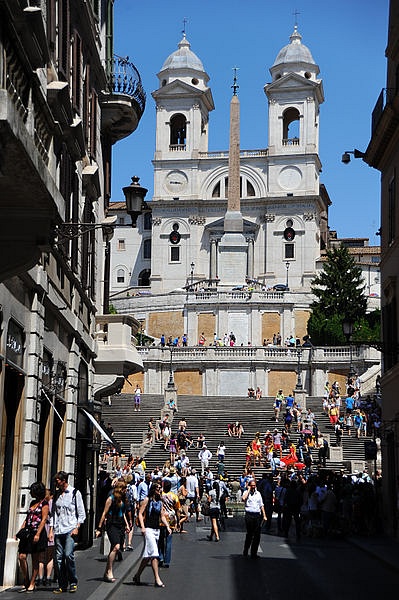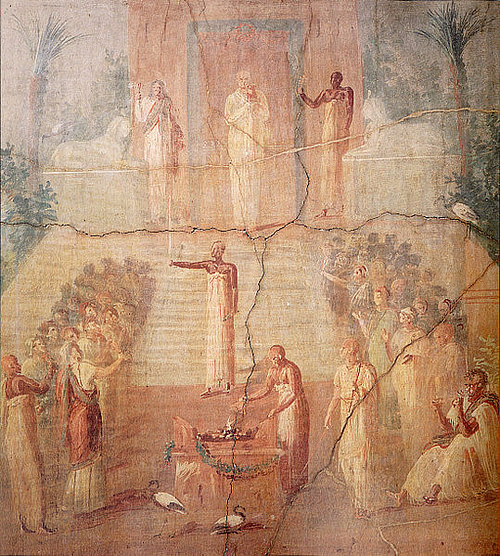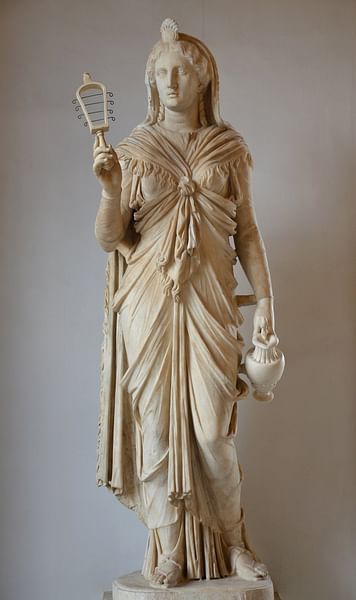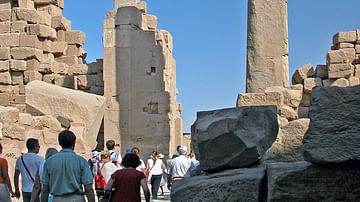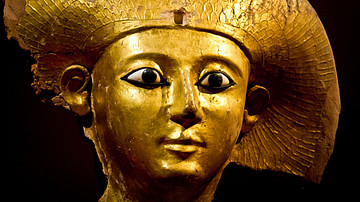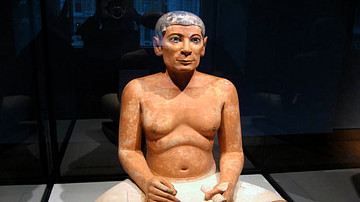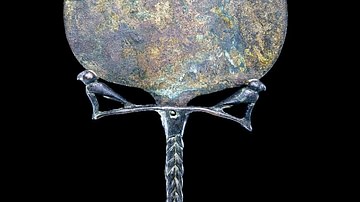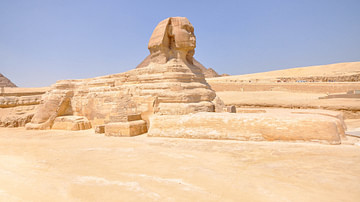The Eternal City of Rome is one of the places in the world with the most historical sites to visit. The list of ancient ruins, museums, churches, and other historical landmarks makes the city an Eldorado for anyone interested in history.
Rome has many Egyptian sites and objects that are perhaps not well known or visited by tourists. These sites range from a now-forgotten temple to statues, obelisks, and even a pyramid.

In 30 BCE, Egypt became a Roman province and Egyptomania swept through Rome. Ancient Egypt was in many ways as intriguing and distant to the ancient Romans who lived during the first centuries of the empire as ancient Rome is for us today. Here is a guide to some of the sites you can visit to learn more about the ancient Egyptian culture and heritage in Rome.
The Roman Pyramid
One of the most visible signs of Roman Egyptomania is the Pyramid of Cestius, which still stands near Porta San Paolo, south of the historic city center. The pyramid was constructed between c. 18 - c. 12 BCE as a tomb for Gaius Cestius who was a wealthy praetor, tribune of the plebs and member of the College of Septemviri Epulones (priestly college responsible for banquets during festivals). Cestius was said to be fascinated by ancient Egypt. This fascination was not uncommon in Rome following Emperor Augustus' (r. 27 BCE – 14 CE) annexing of Egypt in 30 BCE.
Though not as monumental as the pyramids of Egypt, the Pyramid of Cestius - the only “Roman Pyramid”- is still a splendid sight and worth a visit even in a city filled with monuments and sites of historical and artistic significance.
It is especially wonderful to study this well-preserved pyramid, which was built in only 330 days. Few people would guess that it has been standing for over 2,000 years as the city around it has changed and evolved. In some artworks, one can see that this was not the only pyramid standing in Rome during ancient times.
There was also a pyramid called the “Pyramid of Romulus”, which stood near where the Castel Sant'Angelo stands today in Parco Adriano, Rome. This pyramid was destroyed, however, and its material was reused (as happened with many ancient monuments in the city) to build a new monumental building - St. Peter's Basilica. The Cestius pyramid, which was called the pyramid of Remus before its origin was revealed in the 17th century CE, was protected from this fate. This was because it became part of the Aurelian Wall built between 271-275 CE to protect and defend Rome.
The pyramid and some of the best-preserved parts of the Aurelian Wall can be seen from the road right outside the wall, and the site is easy to access either by walking (25-30 minutes from the Colosseum), by public transport or train to Piramide station.
However, if you would like to study the pyramid more closely and away from noisy traffic, you should visit the the Cimitero Acattolico (Protestant cemetery), which is located inside the wall. The cemetery is one of the most magical sites in Rome and an oasis in such a hectic city. You can sit on a bench while admiring the pyramid, and you might be visited by one of the many adorable cats living in a shelter at the cemetery. You can see inside the pyramid by booking a private guided tour. Before leaving the cemetery, take the time to visit the graves of the poets John Keats (1795-1821 CE) and Percy Bysshe Shelley (1792-1822 CE) and also some of the other beautiful headstones, including the captivating Angel of Grief, an 1894 CE sculpture by the American poet and sculptor William Wetmore Story (1819-1895 CE).
Obelisks
Another visible Egyptian imprint on Rome is the many obelisks found throughout the city. Most people are aware of obelisks in Rome, but few know the rich history of these monuments and the long journey to their current location. There are 13 obelisks adorning the city of Rome, and the Italian capital can pride itself on having more obelisks than any other city in the world.
The earliest obelisks to be erected in Rome were transported from Egypt after Augustus' victory at the Battle of Actium (31 BCE) and the annexation of Egypt. One of the earliest imported obelisks that still graces the city can be visited at St Peter's Square, directly in front of St. Peter's Basilica in Vatican City.
This obelisk stands in the middle of the square and is visited by millions of Catholic believers and tourists each year. It is an iconic part of the Vatican complex, but it was not originally linked with Christianity. All that is known of the obelisk's origin is that it was erected in the Egyptian city of Heliopolis before it was moved to Alexandria by Augustus. After reaching Rome, the obelisk was placed by Emperor Caligula (r. 37-41 CE) in the Circus he had constructed close to where the Vatican stands today, and the monument was finally placed in its current location in 1586 CE.
Two other obelisks were standing in Circus Maximus during ancient times - placed there on the orders of Augustus and Constantius II (r. 337 – 361 CE). Augustus' obelisk is known as the Flaminio Obelisk and is believed to have originated from the time of Seti I (1290-1279 BCE) and his son Ramesses II (1279-1213 BCE). Today, it stands in the middle of the magnificent Piazza del Popolo at the entrance to the historic city center.
Constantius II wanted to surpass his predecessor's obelisk at Circus Maximus and brought to Rome an obelisk originally erected at Aswan in Egypt by Thutmose III (1458-1425 BCE). At some point, the obelisk (known as the Lateran Obelisk) fell and was buried by mud. It was excavated in 1587 CE and can be visited in front of the Basilica of St. John Lateran. It is the largest standing ancient Egyptian obelisk in the world.
Together with the Flaminio Obelisk, Augustus brought the Montecitorio Obelisk to Rome, and it dates from the age of Psamtik II (595–589 BCE). Also known as the Solar Obelisk, it was placed at Campus Martius as part of Augustus' ancient sundial - the Solarium Augusti. You can see this obelisk in the Piazza Montecitorio in front of Italy's Chamber of Deputies.
Two of the most visited obelisks in Rome is the one standing at the top of the Spanish Steps and the one crowning the magnificent Fontana dei Quattro Fiumi (Fountain of Four Rivers) in Piazza Navona, which was sculpted by Gian Lorenzo Bernini (1598-1680 CE) – however, these are ancient “fakes”.
Piazza Navona is one of the most popular sites in Rome and a great place to sit down and soak up the enchanting atmosphere of the city. While enjoying a cooling gelato you can also study the obelisk of the Fontana dei Fiumi, which is not as ancient as the other Egyptian obelisks in Rome. The origins of this obelisk cannot be traced to the Pharaonic era even though it was imported from Egypt. The obelisk was ordered to be constructed by the Roman emperor Domitian (r. 81-96 CE). It was sculpted in Egypt and transported to Rome where it originally adorned the temple of Isis and Serapis.
The Sallustiano Obelisk stands at the top of the Spanish Steps. It is not a Pharaonic obelisk for it was constructed during the reign of Emperor Aurelian (r. 270-275 CE) and placed in the Gardens of Sallust (developed by the Roman historian Sallust in the 1st century BCE).
These are just some of the 13 obelisks in a city that never runs out of hidden gems and interesting historical sites to visit. Watch the video below to learn about the Quirinal Obelisk. The question for any visitor to Rome is how many obelisks can be visited while also leaving time to enjoy some of the best pizzas in the world.
The Temple of Isis
Religious cults and mystery religions from the Hellenistic world, Persia, and Egypt were also adopted and integrated into Roman religion. One of the most visible and important of these adopted cults was the cult of Isis - the Egyptian goddess of motherhood, magic, healing, and wisdom. Isis, known as The Lady of 10,000 Names, had a temple in Rome, the Iseum Campense, close to where the Pantheon still stands. She was honored daily by the lighting of a sacred flame and the singing of sacred hymns.
The Isis temple was part of a larger temple complex also dedicated to the Egyptian–Hellenistic god, Serapis. Serapis was associated with the sacred Apis bull of Egyptian religion and was a god of the underworld but became a deity connected to the sun when he adopted the appearance of the god Zeus, known from Greek mythology.
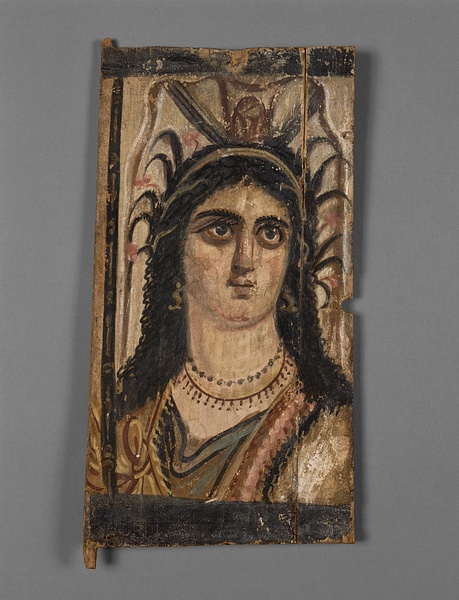
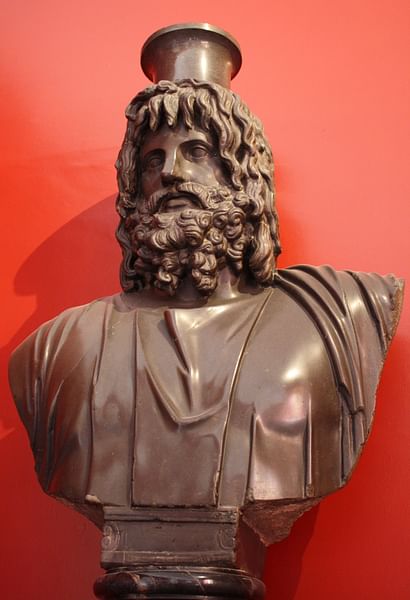
A record from the calendar of 354 CE tells us that the most important day of the year in the Roman Isis cult was March 5th. The festival held in her honor was called Navigium Isidis and was held to celebrate the yearly reopening of seaborne traffic after the sea had been closed to navigation for four and a half months. During the festival, a great and colorful procession went to the banks of the Tiber where a boat dedicated to the goddess was launched.
The temple to Isis was closed in February 391 CE by Emperor Theodosius I (r. 379-395 CE) when he made Christianity the only legal religion in the empire. However, some records suggest that the Isis cult may have continued for a few years after being officially outlawed. This might be because people were afraid of interfering with the belief that rituals secured safe and prosperous seafaring, or because of their loyalty to the powerful goddess that had been worshiped for thousands of years.
The temple of Isis no longer stands but its location is known. The location of the temple borders where the Basilica di Santa Maria sopra Minerva stands today, and it is a magnificent site worth visiting. This church is the only Gothic church in Rome and was built between 1280 - c. 1350 CE by the Dominican Order. It is arguably one of the most beautiful sacred sites in Rome.
The church was built over the ruins of previous ancient temples and derives its name “over Minerva” from a small temple dedicated to Minerva, which was located close to the Isis temple. Some argue that the builders of the church misidentified the temple of Isis as a temple dedicated to Minerva as the two goddesses were sometimes merged and interlinked in ancient times. The virgin goddess Minerva - the equivalent to the Greek Athena in Roman mythology - shares the traits of Isis as being a goddess of knowledge and wisdom. After the introduction and spread of Christianity, Mother Mary inherited many of the traits of these ancient goddesses and their sacred sites.
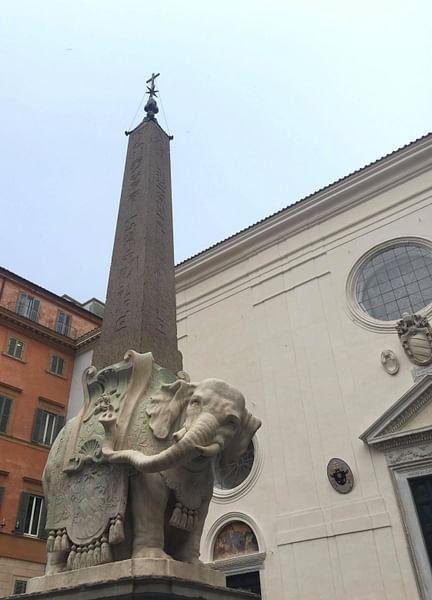
One of the few hints of the site's Egyptian past is the presence of one of the many obelisks in the city. Originally several obelisks, including the Macuteo Obelisk in front of the Pantheon, were part of the Isis and Serapis complex but now only one remains standing in the Piazza della Minerva. It is the smallest of Rome's obelisks, and it is positioned on the back of an elephant sculpted by Gian Lorenzo Bernini (1598-1680 CE). The obelisk's origin is not known, but since it was found in the garden next to the cloister of the church of Santa Maria sopra Minerva, it is believed to have stood at the entrance of the Isis temple in ancient times after being brought to Rome by Emperor Diocletian (r. 284-305 CE).
Whether you stay outside in the piazza and study the obelisk, or go inside and sit down in this beautiful church, it is impossible not to recognize the beauty and legacy of this site that through millennia has celebrated the wisdom and motherly love of a goddess in a foreign city.
After staying here for a while, imagining what the temple might have looked like and how life in the temple might have been during its heyday, it is possible to also visit the Capitoline Museum, where finds from the temple are on display. Some of the finds include columns and statues from the temple. There is also a statue of Isis in the museum. It was found at Hadrian's Villa outside Rome and dates from the 2nd century CE.
If you have not tired of Egyptian sites and objects the Museo Nazionale Romano in Palazzo Altemps has a great collection of Egyptian artifacts as does the Vatican museum where nine rooms are dedicated to ancient Egypt (the Gregorian Egyptian Museum).
